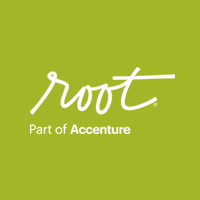Do you believe that “a picture is worth a thousand words”? It refers to the idea that ideas and stories can be described with just a single image, instead of a large chunk of text. Well, last week, I received a picture from my older brother:
A picture of my niece dressed as Belle (from Beauty and the Beast) for Halloween with a sign on her back that reads: “I’m going to be a BIG SISTER!”
One picture and a couple of words said it all – he didn’t have to call and explain anything – I knew my brother and his wife were going to have another baby! I was stunned, excited, and awestruck all at the same time.
This really made me start to think about how we use visuals and phrases to convey meaning. And we do it every day! When you see a red light or sign that says STOP, you know immediately what to do. If someone is wearing a nametag on their shirt, you don’t need to ask their name – you can just begin a conversation using their name. You can look on a map to see where you are, where you are traveling to, and how far away it is. All of these visual cues allow us to make an observation, interpret the message, and then move forward.
Here at Root, we believe that visual presentations – when used properly – can be more powerful than big blocks of text. We provide highly visual learning that quickly conveys meaning and messages to our learners. Using visuals with short, strategically placed text allows us to provide a learning experience that engages learners and connects their hearts and minds to the content. These learning experiences:
Foster Critical Thinking: Visuals help set the context so users make connections, understand relationships, and recall details related to the content.
Build Recall and Retention: Learners can remember information better when it is represented both visually and verbally, because they can associate images with the content.
Create Connections: Learners are better able to comprehend new ideas and concepts when they can connect new content with current knowledge.
Improve Comprehension: Diagrams, charts, graphs, etc. can display large amounts of complex data and information so that it’s easier to understand, simpler to organize and prioritize, and has clearer connections and patterns.
So – as you go throughout your day, really think about how often we use visuals and images to get our message across to others – and share your own examples!





